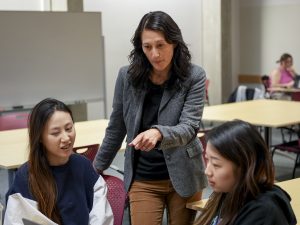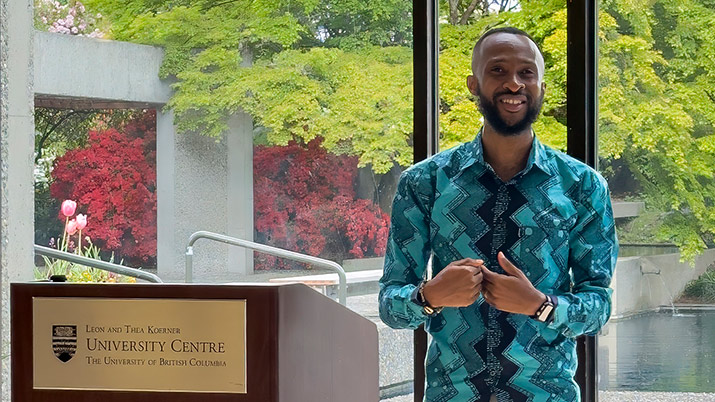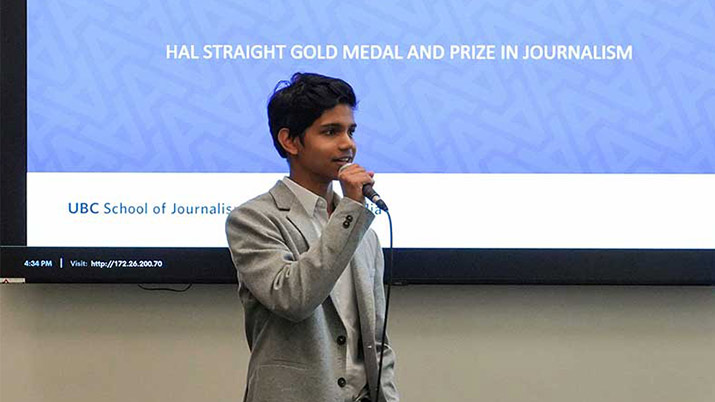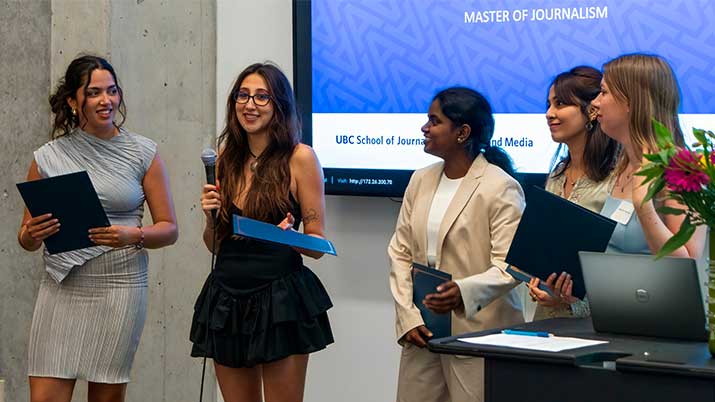Emmy award-winning journalist Carrie Ching will join JWAM as the Asper Visiting Professor this week. We caught up with her to learn more about her current research, plans during her stay, and her close brush with the recent Maui wildfires.
Carrie Ching is an Emmy award-winning independent journalist and filmmaker born and raised in Kailua, Hawaii.
She worked in journalism for more than a decade in the San Francisco Bay Area, and is now based in Haiku, Maui. She recently directed and produced projects for ProPublica, the International Consortium of Investigative Journalists (ICIJ), and VICE, including a six-episode illustrated documentary series for VICE News called Correspondent Confidential. For six years she led multimedia projects at the Center for Investigative Reporting as Senior Multimedia Producer. Her specialty is narrative multimedia storytelling and exploring ways to use digital media tools—including video, audio, photography, animation, and interactive graphics—to push the boundaries of storytelling on the Web and other platforms.
How did you hear about the Asper Visiting Professor position?
It was actually Mary Lynn and Candis Callison who introduced me to the UBC journalism program back in 2018 when they interviewed me for their book, Reckoning: Journalism’s Limits and Possibilities. After that I did some visiting lectures via Zoom and they suggested I apply for the Asper. Five years later we finally made it happen!
What are you currently working on?


I have been researching and writing about and reporting on this topic for more than two decades — it was the subject of my undergraduate thesis in cultural anthropology and my master’s project in journalism. I started writing the memoir version of the project during the pandemic, but this project really got a jumpstart last August, when I moved my family back to my home state of Hawaii — to Maui, specifically — and thirteen days after we arrived, the island was swept with deadly wildfires. I was pulled into reporting on the catastrophe for NBC, and that experience has helped me frame the rest of my research and reporting and anchor it in this present moment.
“I'm working on a book, a reported memoir about Hawaii and the legacies of colonialism that are still very present … It’s a work of creative nonfiction that also explores the human relationship to land and the rest of our natural environment, and how that relationship has been fractured over time through shifts in culture and behavior, leading us into the environmental crises we are experiencing today on a global scale”
Carrie Ching
Asper Visiting Professor
“I'm working on a book, a reported memoir about Hawaii and the legacies of colonialism that are still very present … It’s a work of creative nonfiction that also explores the human relationship to land and the rest of our natural environment, and how that relationship has been fractured over time through shifts in culture and behavior, leading us into the environmental crises we are experiencing today on a global scale”
Will you talk about your background in multimedia journalism and the recent Maui fires during your visit?
Yes, I will be working with the students on two different themes:
i. Advising them on audiovisual storytelling techniques, with a focus on narrative storytelling and storytelling with illustrations and animation.
ii. Drawing from my recent experience reporting on the Maui wildfires, I will also be lecturing on disaster journalism and reporting on indigenous communities in post-colonial situations.
What classes/workshops will you be offering during your stay?
I’ll be in-person at the Integrated Journalism class with Kathryn Gretsinger on February 27 and March 5, and in the J400 class with Mary Lynn Young on February 28 and March 6.
J400 class with Prof. Mary Lynn Young
On Feb 27, I’ll be talking about first-person memoir journalism and my storytelling series for VICE called Correspondent Confidential. In that class we will watch a couple of episodes and discuss the process of creating first-person journalism. During my second visit on March 6, I’ll be talking about my experience reporting on the Maui wildfires — I’ll present a visual slideshow and discuss the challenges we face as journalists reporting in these fast-paced disaster scenarios, and how deeper stories about indigenous communities and colonialism are often overlooked and misunderstood by reporters from faraway who parachute in for these catastrophic events.
Integrated Journalism class with Prof. Kathryn Gretsinger
I am teaching a hands-on workshop about narrative multimedia storytelling with Prof. Gretsinger. This is already underway — I zoomed into the class on February 13 to discuss the project with the class and they are working on their story pitches now. The goal is to produce a short (1-5 minute) narrative multimedia project that will be crafted from an audio interview with either photographs or illustrations. The project will consist of one person telling a complete narrative story with a beginning, middle and end — no narration will be used. This is a documentary-style approach to multimedia storytelling, and it can be challenging to pull together a complete story without relying on narration to summarize the basic facts. We’ll present our works-in-progress to the entire journalism school community on March 5.
How can students reach you?
I’ll be available to any students who want to connect during my visit. Students can reach me by email and I’ll have a temporary office space at the school where students can find me to talk. During my first visit to the school in October 2023 I was thrilled to be surrounded by such passionate, inspired students and by such an interesting, diverse, and supportive faculty community. I look forward to reconnecting with everyone I met in the fall, and to meeting new students and faculty during my upcoming visit.
Contact Carrie
Office: SingTao #303 (Feb 27-28 & Mar 5-6)


